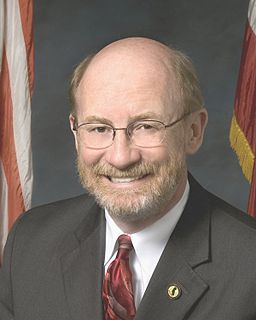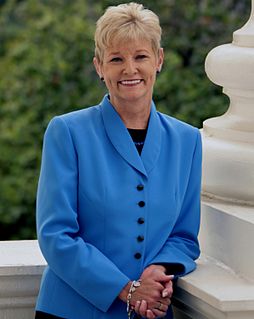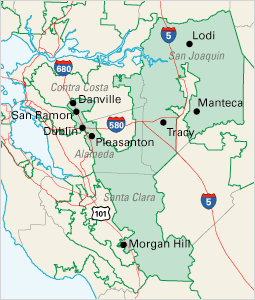
The 2006 California gubernatorial election occurred on November 7, 2006. The primary elections took place on June 6, 2006. The incumbent Republican Governor, Arnold Schwarzenegger, won re-election for his first and only full term. His main opponent was California State Treasurer Phil Angelides, the California Democratic Party nominee. Peter Camejo was the California Green Party nominee, Janice Jordan was the Peace and Freedom Party nominee, Art Olivier was the California Libertarian Party nominee, and Edward C. Noonan was the California American Independent Party nominee.

Gilbert Anthony Cedillo is an American politician, serving as a member of the Los Angeles City Council for the 1st district since 2013. A member of the Democratic Party, Cedillo was previously a member of both the California State Assembly and the California State Senate.

Proposition 74 (2005) was a ballot proposition in the 2005 California special election that intended to extend probationary periods for the state's public school teachers from two years to five before attaining tenure. It failed at the polls, with 55% of voters rejecting it.

John Laird is an American politician who was Secretary of the California Natural Resources Agency from 2011-2019 and a former legislator who represented the 27th district in the California State Assembly until 2008. The 27th district included parts of Santa Clara County, Santa Cruz County and Monterey County. Laird was one of the first two openly gay men to serve in the California legislature. Laird became one of the United States' first openly gay mayors in 1983 when he took over the mayoralty of the city of Santa Cruz, California.

The recent and current politics of the U.S. state of California are complex and involve a number of entrenched interests. (For historical politics, see Politics of California before 1900).

Elections in California are held to fill various local, state and federal seats. In California, regular elections are held every even year ; however, some seats have terms of office that are longer than two years, so not every seat is on the ballot in every election. Special elections may be held to fill vacancies at other points in time. Recall elections can also be held. Additionally, statewide initiatives, legislative referrals and referenda may be on the ballot.

Sharon Runner was an American politician. She was a Republican California State Senator, who represented the 21st Senate District at the time of her death, and previously represented the 17th Senate District from 2011 to 2012. She was also a member of the California State Assembly from 2002 to 2008, representing the 36th district. She was the wife of California State Board of Equalization Member George Runner. From 2004 to 2008, then-Senator George Runner and then-Assemblywoman Sharon Runner were the first husband and wife in California history to serve concurrently in the California State Legislature.

Electoral reform in California refers to efforts to change election and voting laws in the U.S. state of California.

The California state elections, February 2008 were held on February 5, 2008 throughout California. Presidential primaries and a special election for a State Assembly seat were among the contests held. Seven ballot propositions were also decided on.

The 2008 United States presidential election in California took place on November 4, 2008, in California as part of the 2008 United States presidential election. Voters chose 55 electors, the most out of any of the 50 states, to the Electoral College, who voted for president and vice president.

Proposition 11 of 2008 was a law enacted by California voters that placed the power to draw electoral boundaries for State Assembly and State Senate districts in a Citizens Redistricting Commission, as opposed to the State Legislature. To do this the Act amended both the Constitution of California and the Government Code. The law was proposed by means of the initiative process and was put to voters as part of the November 4, 2008 state elections. In 2010, voters passed Proposition 20 which extended the Citizen Redistricting Commission's power to draw electoral boundaries to include U.S. House seats as well.

The California state elections, June 2010 were held on June 8, 2010 and included five propositions and two special elections, one for a State Senate seat and the other for a State Assembly seat. Primary elections for all statewide offices, a seat to the United States Senate, all Californian seats to the House of Representatives, all of the seats of the State Assembly, and all even-numbered seats of the State Senate, along with the first round election for the nonpartisan Superintendent of Public Instruction were also held.

2009 California's 32nd congressional district special election was held July 14, 2009, to fill the vacancy in California's 32nd congressional district. The election was won by Democrat Judy Chu, who became the first Chinese American woman elected to serve in Congress.

Proposition 1B was a defeated California ballot proposition that appeared on the May 19, 2009 special election ballot. The measure was legislatively referred to the ballot by the State Legislature. If passed it would have secured additional funding for primary education. Additionally, Proposition 1B would have only passed if Proposition 1A passed as well.

Proposition 1F of 2009 was a measure approved by California voters relating to the salaries of state officers. It was an amendment of the Constitution of California prohibiting pay raises for members of the State Legislature, the Governor, and other state officials during deficit years. It was proposed by the legislature and approved in a referendum held as part of the May 19, 2009 special election ballot, in which the California electorate also voted on five other propositions.

Proposition 14 is a California ballot proposition that appeared on the ballot during the June 2010 state elections. It was a constitutional amendment that effectively transformed California's non-presidential elections from first-past-the-post to a nonpartisan blanket primary. The proposition was legislatively referred to voters by the State Legislature and approved by 54% of the voters. It consolidated all primary elections for a particular office into an election with one ballot that would be identical to all voters, regardless of their party preferences. The two candidates with the most votes in the primary election would then be the only candidates who would run in the general election, regardless of their party affiliation.

The California state elections, November 2010 were held on November 2, 2010.

The California state elections, June 2012 were held on June 5, 2012 and included two propositions, primary elections for each party's nominee for President, and primary elections to determine the top-two candidates for California's Class I seat to the United States Senate, all of California's seats to the House of Representatives, all of the seats of the State Assembly, and all odd-numbered seats of the State Senate, who will compete against each other in a run-off on November 6, 2012.

Redistricting in California has historically been highly controversial. Critics have accused legislators of attempting to protect themselves from competition by gerrymandering districts. Conflicts between the governor and the legislature during redistricting often have only been resolved by the courts.

In California state elections, 2014 was the first year in which the top statewide offices were elected under the nonpartisan blanket primary, pursuant to Proposition 14, which passed with 53% voter approval in June 2010. Under this system, which first went into effect during the 2012 election year, all candidates will appear on the same ballot, regardless of party. In the primary, voters may vote for any candidate, regardless of their party affiliation. The top two finishers, regardless of party, then advance to face each other in the general election in November.















